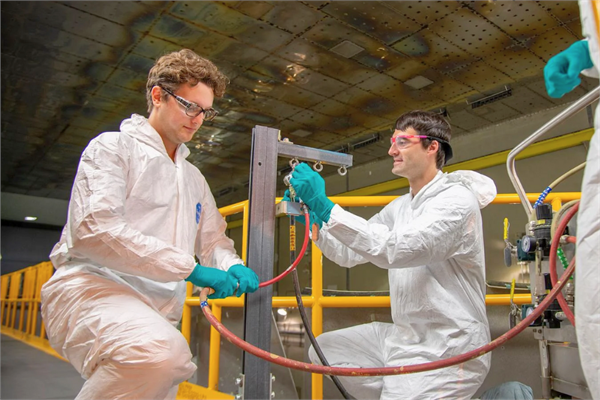
NASA and Boeing teams at the Michoud Assembly Facility have implemented an improved technique for priming the Space Launch System (SLS) core stage fuel tank ahead of applying its signature thermal protection foam.
NASA technicians have introduced a refined method for preparing the Space Launch System (SLS) fuel tank — the core stage — ahead of applying its well-known thermal protection system (TPS) coating.
Although the rover shown is not bound for Mars, it is supporting development of the rocket that will send astronauts around the Moon. At NASA’s Michoud Assembly Facility near New Orleans, Boeing teams have enhanced the priming process used on the SLS cryogenic fuel tank.
The rocket’s distinctive orange spray-foam layer regulates the temperature of approximately 733,000 gallons (2.8 million litres) of liquid hydrogen and liquid oxygen propellants, stored at minus 423 F and minus 297 F (minus 253 C and minus 183 C) during pre-launch operations.
- The TPS spray foam may not adhere to the tank’s surface if the primer isn’t first applied consistently and in compliance with engineering requirements.
- Before the protective foam is applied, bare aluminium tank surfaces must be covered with primer. An automated spray system treats most of the 149-foot (45.4-metre) tank, but technicians still manually coat the domed sections to ensure full coverage and adherence.
“Kicking off this project was a bit overwhelming as well as exciting. It’s a challenge to collaborate across different functional groups, using everyone’s unique strengths and perspectives, but rewarding. We had team members familiar with chemical processing, engineering design and requirements, and practical knowledge of applying these concepts for manufacturability. I’m proud of how our Boeing teammates worked together to create a simple yet effective solution to solve such a complicated problem,” has stated Boeing engineer Nick McEvoy.